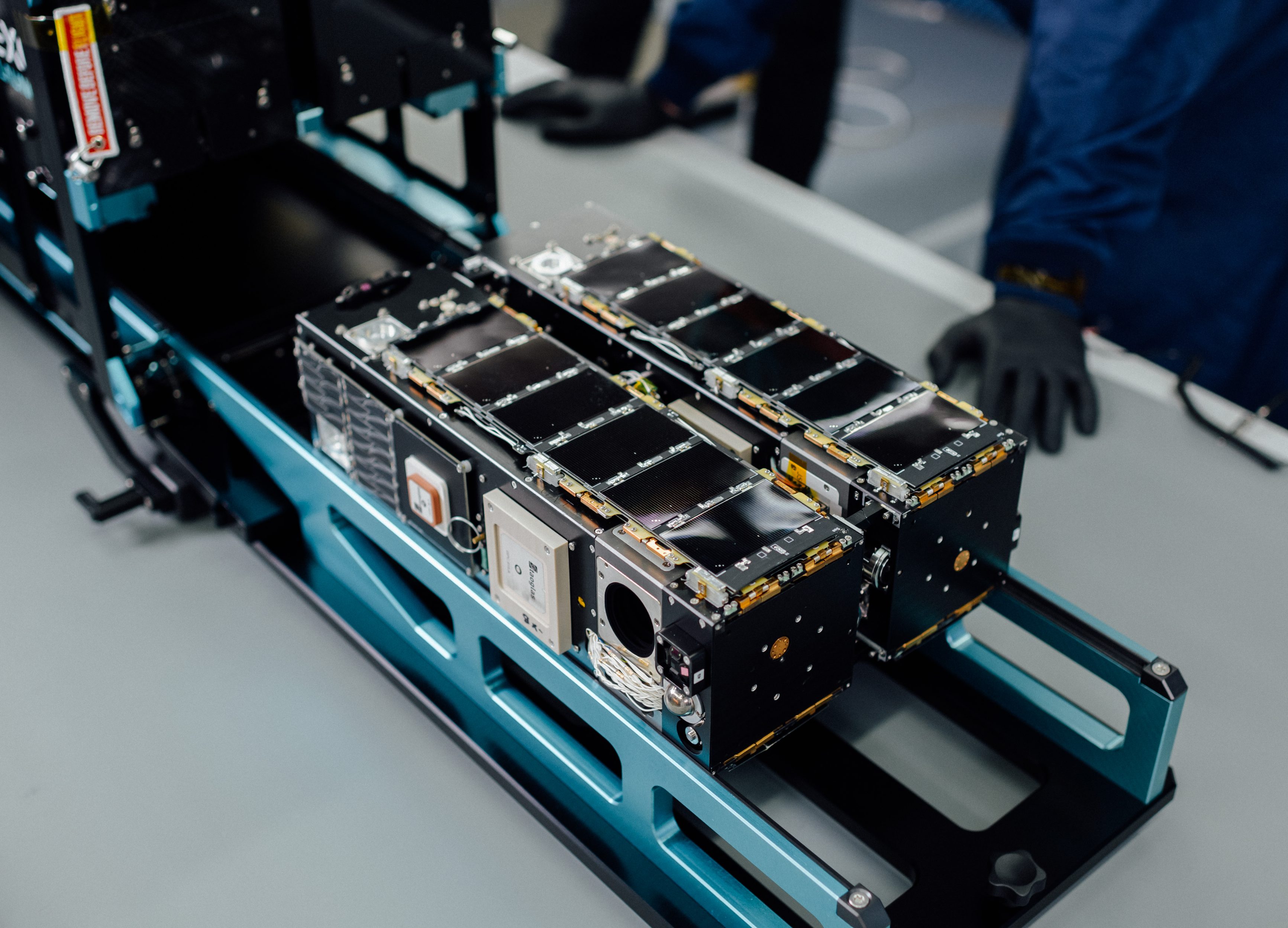
NASA will provide the CURIE (CubeSat Radio Interferometry Experiment) as a rideshare payload on the ESA (European Space Agency) inaugural flight of the Arianespace Ariane 6 rocket to provide a glimpse into the primary drivers of space weather. Launch is targeted for July 9 from Europe’s Spaceport, the Guiana Space Center in Kourou, in French Guiana.
Designed by Dr. David Sundkvist and a team from the University of California, Berkeley, CURIE is a radio interferometer comprising two 3U CubeSats that will launch bolted together as one before separating into two later in orbit. The experiment’s two CubeSats will provide two separate vantage points to measure the same radio waves coming from the Sun and other sources in the sky.
The CubeSats will study radio burst emissions from solar eruptive events such as flares and coronal mass ejections in the inner heliosphere – the region between the Sun and Jupiter. The ejections drive space weather often contributing to dramatic aurora events, and disrupting orbiting satellites, power grids, and communications on Earth.
The mission is the first of its kind to measure radio waves in the 0.1-19 MHz frequency range from space. It serves as an experimental platform and pathfinder in the development of new space-based radio observation techniques. NASA’s Science Mission Directorate funds and manages the mission through the Heliophysics Flight Opportunities for Research and Technology activity.
Earth’s ionosphere absorbs the particular radio waves CURIE will study – a region of charged gases 30 to 400 miles above the planet’s surface. The satellites will need an orbit around 360 miles above Earth to reduce radio wave blockage.
“NASA and ESA share a collaborative and mutually beneficial working relationship and are in constant communication about potential spacecraft and launch opportunities between the two agencies,” said Norman Phelps, mission manager with NASA’s Launch Services Program at the agency’s Kennedy Space Center in Florida. “ESA notified NASA it could provide a slot on the Ariane 6 if there was a CubeSat compatible with the orbital parameters and launch window, and after a thorough search, CURIE was selected.”
NASA’s CubeSat Launch Initiative (CSLI) manifested CURIE on the Ariane 6 after the agency selected the small satellite during the 11th round of CSLI candidates in 2020.
Since its inception, NASA’s CSLI has launched more than 150 CubeSats on a myriad of rockets and worked with more than 200 institutions and organizations, providing a low-cost way to conduct scientific investigations and technology demonstrations in space.

